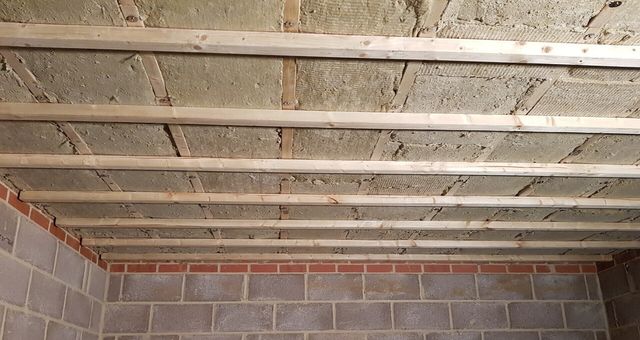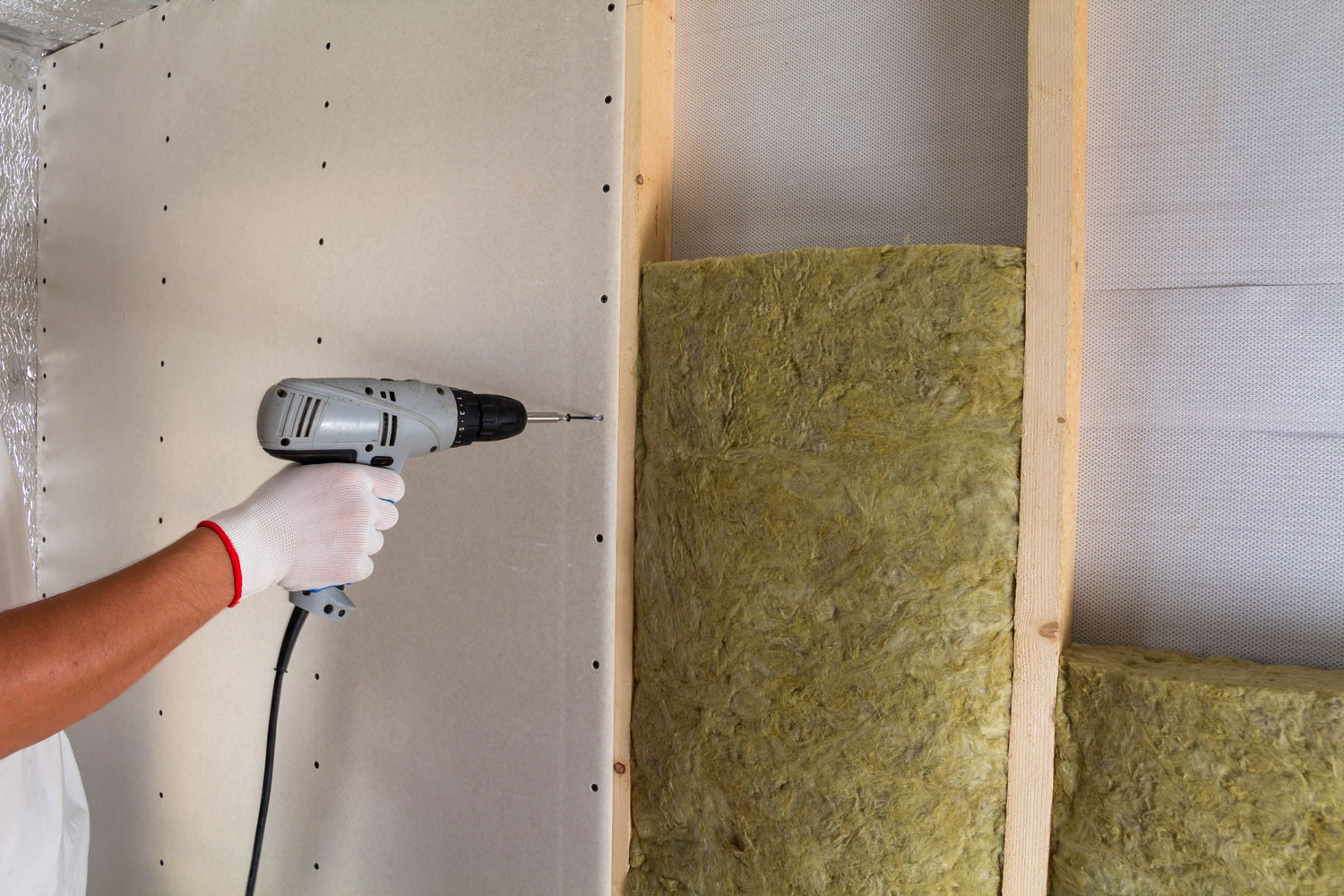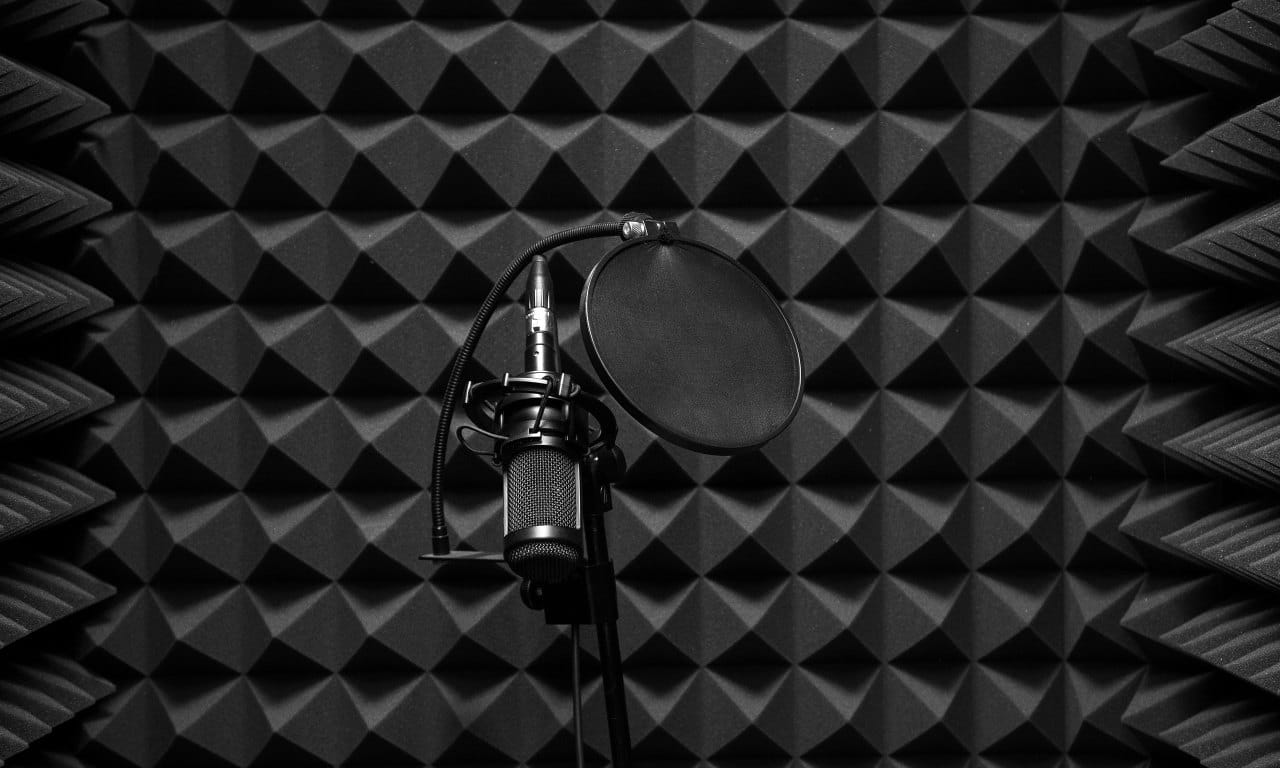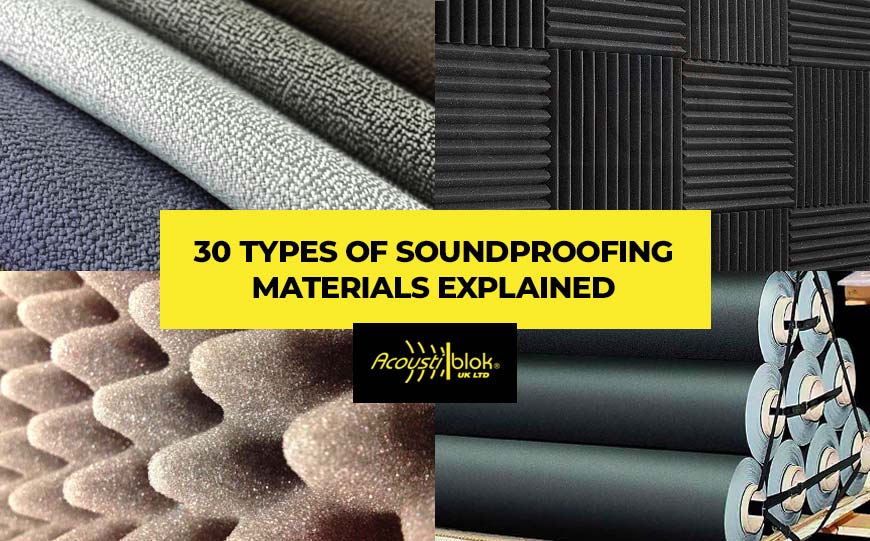All Categories
Featured
Table of Contents
- – 5 Best Types Of Insulation For Soundproofing (2...
- –
- – Best Soundproof Insulation Materials
- – Understanding The Basics Of Sound Transm...
- – STCs to Consider for Your Home
- – Insulation Noise Reduction
- – Different types of soundproofing
- – Different Types Of Insulation
- – Fiberglass insulation
- – MultiPurpose transmission class (STCs) upto...
- – Batt Insulation
- – Foam Spray Insulation
- – Insulation
- – Roxul Rockwool Acoustical Mineral Wool I...
- – Acoustimac Eco Cellulose Insulation
- – Foam It Green Spray-Foam Insulation
- – Mineral Wool vs Fiberglass Insulation Bo...
- – Mineral Wool Panels vs Fiberglass Panels
- – Cellulose Vs Fiberglass Batts, Panels
- – Cellulose vs Roxul Rockwool
- – Cellulose vs. Spray Foam
- – Roxul Rockboard panels vs Rigid Foam
- – Acoustic insulation
- – Move Electrical Boxes
- – Seal The Boxes
- – Insulate the Walls
- – Doors
- – Absorption
- – Insulation made out of mineral wool
- – Cellulose Insulation
- – How To Soundproof Your Room For Cheap (Best In...
- – The Definitive Guide To Insulating For Soundpr...
- – The Best Insulation For Soundproofing: How To ...
- – The #1 Solution For Stopping Unwanted Noise So...
- – The Best Insulation For Soundproofing: How To ...
- – How To Soundproof Your Room With The Best Ins...
5 Best Types Of Insulation For Soundproofing (2022)
Soundproofing a ceiling can help to reduce sound entering your home. It's also a simple project and relatively affordable to soundproof a ceiling. Acoustic tiles and foam tiles can both be used to soundproof a ceiling. These are some helpful tips to help you install these products correctly.
Best Soundproof Insulation Materials
There are many types of soundproof insulation materials available that can be used in your home or office. All of these materials may not be the same. Some may be better than others at blocking out noise, but some may also be more expensive than other options.
Noise pollution is a major problem in many cities across the globe.
This mineral wool fiberglass blown with cellulose spray insulation foamboard is a great solution for your home. It can soundproof and retain heat, as well as protecting walls from moisture damage.
We are exposed to thousands upon thousands of noises every day in our homes. Acoustic insulation materials can help improve our comfort.
Airborne sounds are sound waves that travel through the air. Examples of airborne sounds are vehicles, radio, conversations and dogs barking, while toys and glass falling on the ground and people walking on a wooden flooring are examples. Flanking noises travel through walls and ceilings, under floors, and between floors. It can be hard to control them.
Understanding The Basics Of Sound Transmission
Sound is an electromagnetic wave of pressure moving through the air. Although sound can be heard by the human ear, they cannot be seen and felt. Sound waves travel at different speeds depending on their wavelength (the size of waves).
Sound waves travel through air at different wavelengths. The frequency of sound waves is lower if they are closer together. Other factors, aside from the distance between them, determine the volume of their sound. Their volume will be lower if there is more room and people are present.
Frequency can be measured in Hertz. It is the sound's tone or musical value. A Tuba's frequency or pitch is 29 Hz while a Tuba's frequency or pitch is 2,000 Hz. Most people can hear between 20 and 20,000 Hz when they are young, but as we age, this ability decreases.
Sound waves are controlled by materials that absorb them or block their transmission. Fiberglass absorbs sound more efficiently than other materials, due to its density.
A home that is quiet will have an average level of 40dB. Homes that are noisy will have over 100dB. More effective material will result in greater effectiveness.
STCs to Consider for Your Home
A quiet home should get a higher rating that STC40. STC 56 should go to bathrooms and living spaces. STC 60 should be used for bathrooms and living areas. STC 33 is applicable to walls of 2x4 with 1/2" drywall on each side.
Insulation Noise Reduction
You should soundproof your house before you begin construction. Add more layers of drywall to ensure there's no vibration between rooms. Soundproofing involves making sure the walls have enough space to absorb the sound waves. However, if you are just starting a new construction project, and have no idea how to soundproof your house, we will give you some brilliant tips on the most effective ways of doing so.
There are many different ways you can ensure that you get high quality soundproofing. Sound insulation is one of them, but what exactly does it do? It's an important feature in any home or building because it helps keep noise levels down and reduce unwanted vibrations throughout the structure. The vibration from running motors, vibrating appliances like air conditioners and fans, as well as music played by radios or televisions can all cause issues for those who live in homes with poor soundproofing.
Sound Dampening
Acoustic insulation is 80. Acoustic insulation has a rating of 80.
Insulation can increase the value of your home by keeping heat out and cold in. Drywall can help reduce noise from your home.
Drywall is held up by steel bolts. Sound insulation levels can be increased by 49% by using 5/8".
Different types of soundproofing
However, fiberglass and drywall dominate the soundproofing market. Although drywall is mainly used in older homes it can still be a great choice for homeowners who wish to improve their home's energy efficiency. Fiberglass insulation is becoming more popular due to its ability reduce noise and improve energy efficiency.
Insulation may be either acoustic nor mechanical. To absorb sound waves and prevent vibrations affecting sensitive areas like floors or windowsills, mechanical insulation is foam, metal-studs and steel beams. It sounds simple enough - just add some insulation to your house! What is the best type of insulation?
Acoustic sound-absorbing material can be used to quieten walls, floors, and ceilings. Because they are porous, light, and trap sound waves,
Sound blockers are typically thick, heavy materials which reflect sound waves and prevent them from entering or leaving spaces. They can be found in ceilings and walls as well as doorways. Sound dampers are used to reduce vibrations that transfer through walls. They transmit less noise.
Use isolation walls to reduce noise transfer in different rooms. The clip is used for isolating walls.
Different Types Of Insulation
The mineral wool can be used to insulate. This material absorbs sound and vibrations from both airborne and impact sources.
Fiberglass is an insulation type that is used for insulate homes.
Sound Control Foam Insulation is a type of polyurethane foam spray foam that is applied to walls to insulate a space. It has a high level of soundproofing and can reduce noise by as much as 90%
Extruded polyester is used to produce both blue and pink frosted foam boards. ISO panels are better insulation that either blue or pink foam boards.
A polystyrene panel helps to reduce the noise in a space.
Fiberglass insulation
So which insulation type is best? The answer to that question depends on your budget, your climate and the features you want in your new home. It also depends what noise-reducing items are currently available. Soundproofing has become more competitive because companies are trying to create better products than their competitors. Manufacturers are able to use less material, but still produce quality products.
Electronic Sound Absorption And Cancellation (ESAC) systems work by converting electrical energy into acoustic energy that is transmitted through walls or ceilings directly onto the originating sound source.
Fiberglass insulation is made by melting plastic and spinning it into long, strands. Fiberglass insulation allows cold air to escape in the summer and retains heat during winter.
A thicker batter can reduce the STC by about 1 point. Sound waves reflect back to the source more frequently, which increases overall STC.
Fiberglass insulation are flexible. Fiberglass is rigid. The NRC rating for is 0.85. R11, R19, and R11 are 0.95.
Fiberglass insulation is very efficient at keeping heat in your home.
Fiberglass batts can be used for insulate walls, ceilings and roofs. Semi-rigid Batts can be used to insulate irregularly shaped cavitites, floors, or ceilings. Rigid batts are suitable for installation in walls, floors, ceilings, floors, or around ductwork to reduce noise transmission, echos, and feedback.
Owens Corning has a pink, unfaced insulation roll measuring 23" x39", that can be used between beams, truss and studs. It provides 6 inches of insulation, and an R19 value.
Owens-Corning 703 is a lightweight acoustic insulation. It can be applied to ceilings, walls, or hanging frames in either 2" or 4" Acoustic fabric should be used to cover it, to prevent the fibers from flying.
Owens Corning 2" thick soundproofing insulations have a density of 10.3 pounds/ft3 with an additional STC of 18. They enhance the overall sound.
MultiPurpose transmission class (STCs) upto 53 It has a insulation value of 1. It is better at higher frequency than lower ones. Low-frequency noises can still be a problem.
Mineral Wool
You can find many kinds of mineral wool insulation.
Mineral wool insulation has a stronger structure and density than fiberglas. It is less likely to slouch, or cause noise transfer areas. This also stops sound transmission.
Acoustic tile is used to reduce sound and echo.
Batt Insulation
Batt insulation is a type that wraps around a wall. It is typically made from fiberglass, although some varieties use other materials like polyester. Depending on the size of your space, you can find batt insulation in different thicknesses.
The batt insulation comes already in a rectangular shape, so it can be installed without modification. If you needed to modify certain parts of your product, however, the base material could be a problem. Your product's ability to soundproof and act as a thermal barrier or soundproofing agent could also be affected by the base material.
Batt insulation is made out of fiber glass. It's tough. Fiberglass can be used to make batt insulation.
Because mineral wool insulation can be installed quickly and is cheap, it is very common. Fiberglass insulation is more costly but lasts longer. Ceramic insulation is both the most expensive and the most effective in keeping heat out. While blanket insulation is less expensive than ceramic insulation, it doesn't last as well. While cotton batts are easy to install and cheap, they are not as efficient at keeping heat out of the environment as mineral wool.
Foam Spray Insulation
Polyurethane foam spray is great for insulation in unusual-shaped areas. However, it's most commonly used to insulate attics which are not completed.
Liquid foam insulation can be applied to walls and floors by spraying it. To apply it, you can use a pressure washer. Foam insulation is slow to dry and flexible when it's soft. Foam insulation is used for insulate buildings.
Even though liquid foam insulation can't be used to fireproof your home, it will provide you with some thermal resistance
Insulation
Blowed insulation looks almost identical when poured. However, it can spill out and will not work in new wall building.
Blown insulation is used to insulate houses.
Roxul Rockwool Acoustical Mineral Wool Insulation
There are many manufacturers that use rockwool for soundproofing. The material can be used to create bass traps or an acoustic board.
Six-pound packs of rock wool acoustic yarn insulation are available.
Rockwool can be described as a form or fiberglass insulation that is used in building construction.
Rockwool provides high quality insulation. They are fireproof and waterproof.
Acoustimac Eco Cellulose Insulation
This ecocellulose insulation makes a great selection.
This material is made up of recycled materials.
These panels are ideal for protecting your home and office from high-frequency sounds, such as sirens, explosions, gunshots, and sirens. If you are close to windows or other openings, you will hear them better. However, they will not protect you against low-frequency noises like car engines or footsteps.
Acoustimac insulations' fire rating is for Class A.
Foam It Green Spray-Foam Insulation
This foam insulation spray works well for sealing and insuring large areas. The spray takes about five minutes.
Insulates and seals away air. Additional insulation thickness of 1 inch. Also, you'll receive the following:
The 15 foot hose has 10 nozzles and fan spray tips. Your application gun is yellow and blue.
You can use this foam to make insulation. A slower-rising foam is better.
How to install soundproof Insulation.
Mineral Wool vs Fiberglass Insulation Boots
Although mineral wool batts will cost more than fiberglass batts in the long-term, they are far more efficient. Fiberglass is less sound-absorbing but can still be as strong.
Mineral Wool Panels vs Fiberglass Panels
Panels of minerals wool have an SSTC of 45 to 52 with a NRR between 0.95 - 0.99. Both are suitable for sound absorption and echo.
Cellulose Vs Fiberglass Batts, Panels
Bats, which are mammals, fly around looking for bugs.
Cellulose vs Roxul Rockwool
Cellulose is a fiber made up of long chains that contain sugar molecules. They also have an NRF rating rating of 1.1. It is an excellent sound absorber material.
Cellulose vs. Spray Foam
Cellulose is available in an STP range from 44 to 64, and an NPR range between 0.8 and 0.99.
Roxul Rockboard panels vs Rigid Foam
Rigid foam can be used to make insulation and soundproofing materials.
Roxul Rockboards excel at absorbing sound and reverberation.
Acoustic insulation
Noise is distracting. You can use mineral wool insulation to block outside noise.
Since mineral wool does not absorb heat or cold, it's great for soundproofing your home.
Move Electrical Boxes
You need to ensure that electrical boxes can be easily separated by at least one wallstud. This allows for the use of the 5/8 and 1/2 inches resilient drywall later.
Always ensure that your boxes are easily accessible.
Seal The Boxes
It is recommended that electrical boxes with Acoustic sealants be sealed.
Insulate the Walls
Fiberglass batts must be placed into cavities. Cavity insulation should also be cut with a utility blade to ensure it fits tightly around pipes and cables. When cutting fiberglass, gloves, masks and eye protection are recommended.
Doors
Doors should always have high Sound Transmission Class ratings. Door STC ratings can be improved with sound channels and insulation. However, if you spend too much time insulating walls, you could lose some of its benefits.
Solid wood doors with a 28-year lifespan have a STC that is approximately 28. Acoustic doors with a 30-year life expectancy have an STC that is between 50 and 50. Look for a company that specializes only in commercial construction.
Absorption
Acoustic panels or acoustic boards can be used for sound absorption. To achieve better acoustics, it is important to properly install these panels.
The soundproofing of a room or building is an important element. Combining multiple soundproofing techniques can result in better results.
Acoustical soundproofing is an essential aspect of any building. Some insulations can be better than others.
Insulation made out of mineral wool
Mineral wool can be made from rock or glass fibers. It resists fires but does not absorb moisture.
Cellulose Insulation
Because of its low density it is very easy to cut, and then install. It is also very lightweight so that it does not add much weight to a wall. Cellulose insulation has a high R value of approximately 4 per inch (R-4) when installed as batts or panels. It can be used in attics, walls, and ceilings of homes and buildings.
Cellulose insulation can be used as a soundproofing material. Because it doesn't absorb heat nor cold, it is very effective at absorbing noise. Cellulose insulation is made from recycled paper products such as newspaper and cardboard boxes. The fibers then are made into strands. These strands are then compressed and made into pellets. This produces cellulose fiberglass that can be mold into any shape.
Cellulose insulation refers specifically to plant fibers used as wall cavities. They are better at noise insulation because they trap air and noise.
Specifically, you'll desire to note where all of the various electrical boxes and also cables are and also exactly how much room they use up. TPEditor.com. That will allow you to modify the batt before you put it right into the walls (TpEditor.com). Action 3: Prepare, One more point prior to you can deal with insulation ensure you've got all the equipment you require: Old apparel.
How To Soundproof Your Room For Cheap (Best Insulation Options)


A protective mask, handwear covers, and perhaps also function goggles. Several of the products I spoke about can aggravate the skin, eyes, and also even lungs. So safeguard on your own before you start setting up the insulation. An energy knife for reducing the batt insulation to dimension and also suitable it around electrical boxes.
The Definitive Guide To Insulating For Soundproofing
Step 4: Cut the Insulation, Since you have your gear, you can take care of the insulation - TPEditor.com. However, if you aren't intending on mounting the insulation as quickly as you get it, don't unpack it - Soundproofing TPEditor.com - TPEditor.com. TpEditor.com (Soundproofing TPEditor.com). Fiberglass, specifically, might irritate people with breathing troubles, as it releases little particles right into the air when you manage it (www.TPEditor.com).
The Best Insulation For Soundproofing: How To Stop Noise From Entering Or Leaving Your Home
As I have actually stated, the insulation will possibly be as broad as the wall surface studs, so you'll only need to cut the elevation you require. You can place the batts in as you reduced them, and reduced out the pieces for electric boxes as needed. Tip 5: Place In the Installation, I actually prefer doing this part with a number of assistants (www.TPEditor.com).
The #1 Solution For Stopping Unwanted Noise Sound Proof Insulation

That is, if you bought insulation that has a clear difference in between the front and the back side - www.TPEditor.com. Press and yank the product so that it loads out the entire area.
The Best Insulation For Soundproofing: How To Silence Your Home Or Office

Action 6: Cover It Up With Drywall, If you've installed whatever you desired inside the wall surfaces, you'll possibly want to cover things up at this factor. TpEditor (Soundproofing TPEditor.com).com. Which ones do you select?
How To Soundproof Your Room With The Best Insulation
What insulation is the best for soundproofing
Fiberglass insulation
What R-value does soundproofing require?
So, if someone asks what R-value is best for soundproofing, then we can say that R-13 and R-19 are the two best types for any R-valued soundproof material. On the other hand, R-13 to R-23 is typical for outside walls.
Does higher R-value mean better soundproofing?
R-values higher than 1.0 indicate better insulation. You can soundproof walls with any type of insulation, but it won't do much. For significant noise reduction, you will need to add more.
How effective is insulation for soundproofing?
Foam insulation is capable of reducing sound by up 80 percent but still transmits sound. RetroFoam of Michigan helps homeowners dampen sound from their homes and pole barns, since 2002. We understand the sound transmission process.
If you're working with the kitchen area, drywall may be a far better fit. Additionally, if you're developing your washroom, drywall would be the way to go. TPEditor.com. Extra Steps You Can Require To Insulate Walls as well as Ceilings, On the other hand, if you determine that insulation as well as drywall alone won't reduce it, there are other steps you can take while you have the wall surface studs revealed.
Table of Contents
- – 5 Best Types Of Insulation For Soundproofing (2...
- –
- – Best Soundproof Insulation Materials
- – Understanding The Basics Of Sound Transm...
- – STCs to Consider for Your Home
- – Insulation Noise Reduction
- – Different types of soundproofing
- – Different Types Of Insulation
- – Fiberglass insulation
- – MultiPurpose transmission class (STCs) upto...
- – Batt Insulation
- – Foam Spray Insulation
- – Insulation
- – Roxul Rockwool Acoustical Mineral Wool I...
- – Acoustimac Eco Cellulose Insulation
- – Foam It Green Spray-Foam Insulation
- – Mineral Wool vs Fiberglass Insulation Bo...
- – Mineral Wool Panels vs Fiberglass Panels
- – Cellulose Vs Fiberglass Batts, Panels
- – Cellulose vs Roxul Rockwool
- – Cellulose vs. Spray Foam
- – Roxul Rockboard panels vs Rigid Foam
- – Acoustic insulation
- – Move Electrical Boxes
- – Seal The Boxes
- – Insulate the Walls
- – Doors
- – Absorption
- – Insulation made out of mineral wool
- – Cellulose Insulation
- – How To Soundproof Your Room For Cheap (Best In...
- – The Definitive Guide To Insulating For Soundpr...
- – The Best Insulation For Soundproofing: How To ...
- – The #1 Solution For Stopping Unwanted Noise So...
- – The Best Insulation For Soundproofing: How To ...
- – How To Soundproof Your Room With The Best Ins...
Latest Posts
Which Is The Best Insulation For Soundproofing? A Comprehensive Guide
1625 Great Gardening Ideas
In Cartersville, GA, Finn Haynes and Joe Mills Learned About Best Quality Hearing Aids On The Market
More
Latest Posts
Which Is The Best Insulation For Soundproofing? A Comprehensive Guide
1625 Great Gardening Ideas
In Cartersville, GA, Finn Haynes and Joe Mills Learned About Best Quality Hearing Aids On The Market